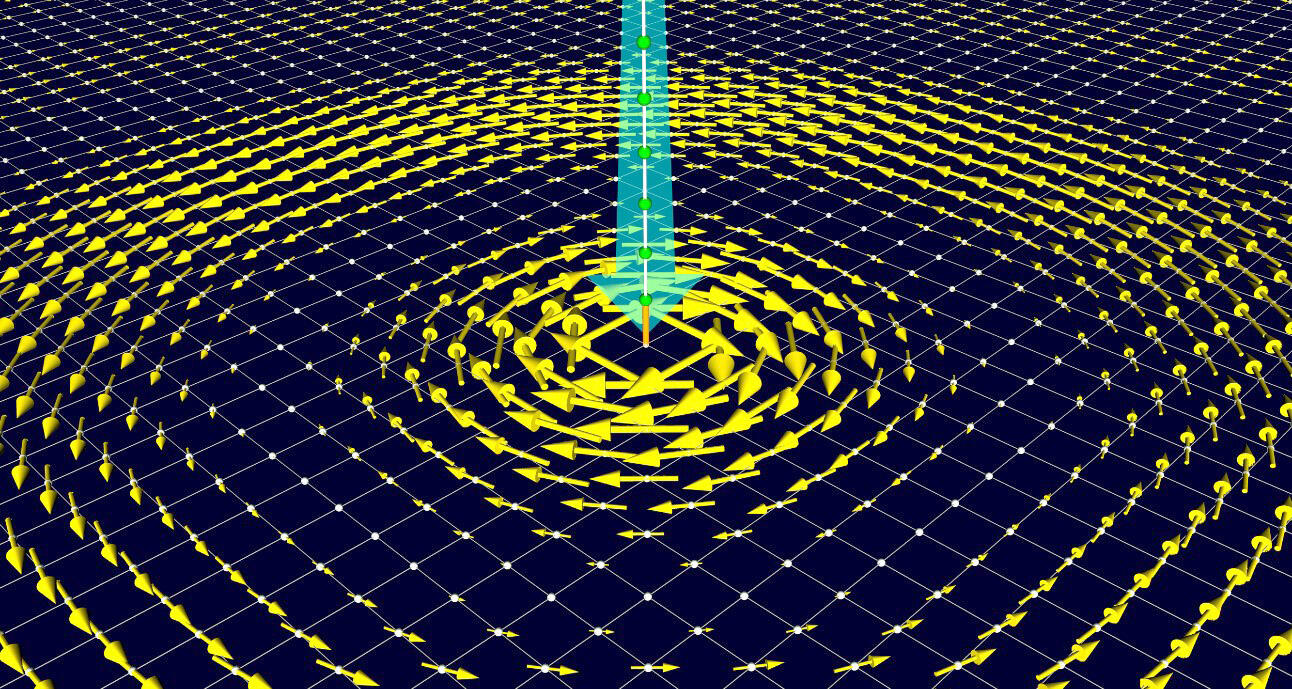An international research team consisting of Sadamichi Maekawa, Senior Researcher, and Seiji Yuki, Team Leader, Research Center for Emergent Matter Science, RIKEN; Junji Fujimoto, Researcher, Kavli Institute for Theoretical Science, University of the Chinese Academy of Sciences; Satoshi Ejima, Researcher, and Holger Feske, Professor, University of Greifswald, Germany, succeeded in identifying methods for generating eddy currents using spin currents (magnetic flow) through numerical simulations.
Using an original numerical simulation method, the team conducted a simulation to locally inject spin currents into a two-dimensional electron system with Rashba-type spin-orbit interaction. By adjusting the spin polarization direction of the injected spin current, eddy currents were found to be induced in the two-dimensional electron system. This phenomenon is contradictory to previous findings in which a DC current flowing uniformly from one end to the opposite end of a two-dimensional electron system was induced. The main difference is related to the varying spin polarizations of the spin current.
In this study, the spin polarization of the spin current is perpendicular to the two-dimensional electron system. By contrast, majority of the research to date involves polarization in the plane of a two-dimensional electron system. This difference causes a variation in the behavior of the currents induced in the two-dimensional electron system. In a two‐dimensional electron system with Rashba‐type spin‐orbit interaction, the sum of the total spin angular momentum perpendicular to the two-dimensional electronic system plane and the angular momentum caused by the rotation of electrons moving in two dimensions is conserved.
This result demonstrates the process by which the spin angular momentum flowing in as a spin current is converted into angular momentum caused by the rotational motion of electrons in a two-dimensional electron system. Furthermore, because the degrees-of-freedom of charge are frozen in the quantum spin chain, these results also indicate that pure spin current is converted into the charge degree-of-freedom of the eddies.
In spintronics, which is expected to be the next generation of electronics, spin current, which exhibits a lesser energy loss than electric current, is used for energy and information transmission, and is converted into electric current as necessary. "This method of generating eddies of electric current from spin current provides new possibilities to spintronics. Given that electrical eddy currents can generate magnetic fields and electromagnetic waves, we expect this finding to significantly expand the area covered by spintronics as a next-generation quantum technology," said Senior Researcher Maekawa.

■ Rashba-type spin-orbit interaction: Spin-orbit interaction is a relativistic interaction between the spin angular momentum produced by the rotation of an electron and the orbital angular momentum produced by the orbital motion of an electron around the nucleus (orbital motion).
Rashba-type spin-orbit interactions refer to significant spin orbital interactions in systems with broken spatial inversion symmetries, such as two-dimensional electron systems and three-dimensional matter surfaces and interfaces.
This article has been translated by JST with permission from The Science News Ltd.(https://sci-news.co.jp/). Unauthorized reproduction of the article and photographs is prohibited.




